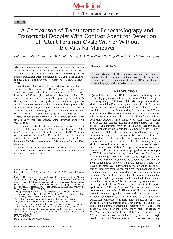摘要
Patent foramen ovale (PFO) is a remnant of the fetal circulation exist in 20% of the general population. The purpose of our study was to compare of transthoracic echocardiography (TTE) and contrast-transcranial Doppler sonography (c-TCD) in the diagnosis and quantification of PFO with or without the Valsalva maneuver (VM).We studied 106 patients with a high clinical suspicion for PFO prospectively. Simultaneous c-TCD and TTE were conducted using agitated saline solution to detect right to left shunt (RLS). To classify RLS, mainly PFO, we applied a 4-level visual classification for c-TCD test: no occurrence of micro-embolic signals; grade I, 1 to 10 signals; grade II, 10 to 30 signals but not curtain; and grade III, curtain pattern. We used the number of micro-bubbles appeared in left atrium per frame image to define classification for TTE test: no occurrence of micro-bubbles; grade I, 1 to 10 micro-bubbles; grade II, 10 to 30 micro-bubbles; and grade III, more than 30 micro-bubbles or left atrium nearly filled with micro-bubbles or left atrial opacity. Statistical analyses were performed using SPSS Version 18.0.RLS was detected in 36.0% in c-TCD test and in 46% in TTE test at rest (P=0.158). And during the VM, RLS was detected in 99.0% in c-TCD test and in 83.0% in TTE test (P<0.001). Compared with the positive results of c-TCD and TTE at rest, the positive results of them with VM is more higher, respectively (all P<0.001). The VM obviously increased the number of micro-bubbles shunting.Both c-TCD and TTE should used as initial screening tool for PFO. VM increases the size of shunt. VM resulted in detection of more RLS both in c-TCD and TTE tests.
- 出版日期2015-10
- 单位西安交通大学
